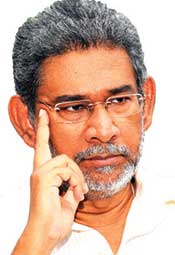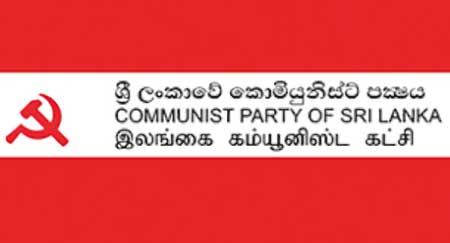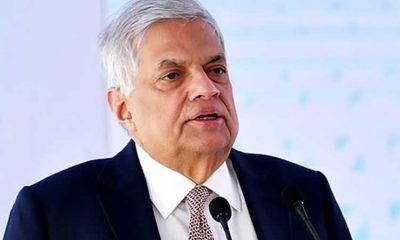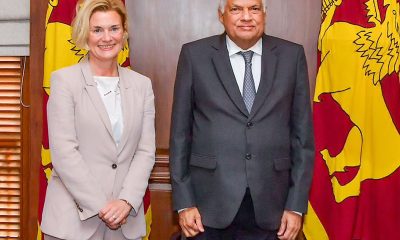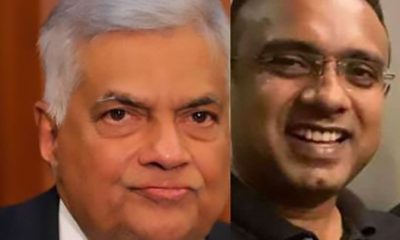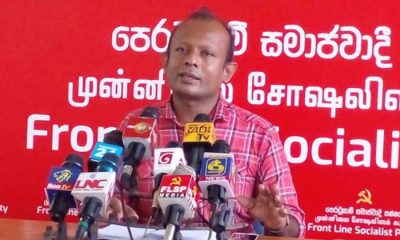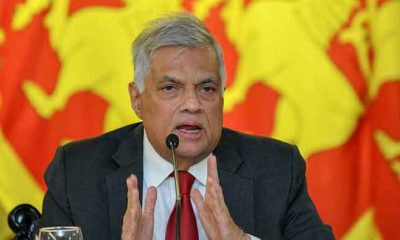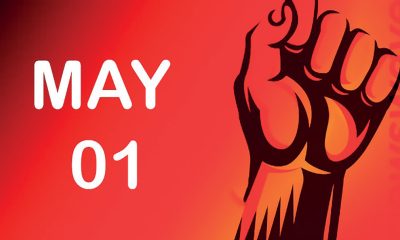Features
80th Anniversary of the Communist Party & The Communist Movement: Potentials & Problems
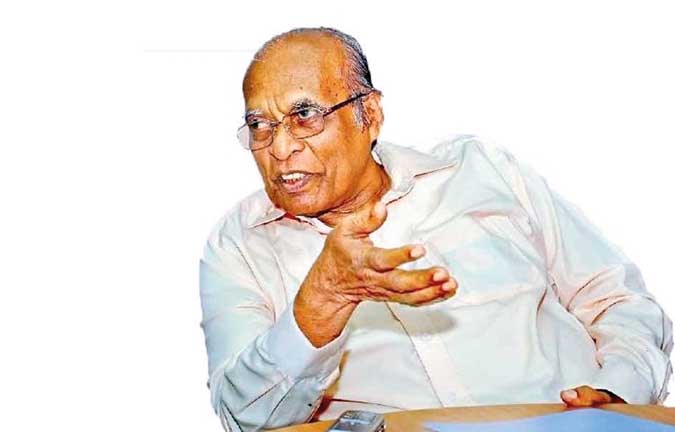
by Dr. Dayan Jayatilleka
The Communist Party of Sri Lanka (CPSL) will celebrate its 80th anniversary early next month. That will mark the 80th birthday not merely of the Communist Party but the broader Communist movement – as distinct from generic Left movement–in Sri Lanka.
As I have argued in an earlier article (The sins of the fathers: The Old Left’s two traditions – The Island), the communist tradition has been considerably consequential on this island and is alive and well in the form of a strong and dynamic contemporary left which derives from and identifies with the communist ideological heritage.
To illustrate, and if I may be pardoned a personal note, in the early-mid 1970s, i.e., despite the terrible repression of the April 1971 uprising, both Prof Rohan Samarajiva and I, who hold antipodal economic and political perspectives today, were, as an undergraduate and high-school student respectively, members of a revolutionary Left organization, Mitipahara (‘Hammer Blow’), founded by the youngest member of the Central Committee of the Communist Party, an intensely intelligent alumni of Moscow State University, who broke away from the party. Still awaiting university entrance, that was the first time I was taken in for questioning by the Intelligence Services Division.
This widely shared heritage alone would make the 80th anniversary of the parent or grandparent party, the Communist party, something well worth celebrating.
There are two other specific reasons to do so. Firstly, the CPSL is due to launch its alternative national economic program. Recalling the knowledgeable and often prescient contribution to economic debates in parliament over decades by DEW Gunasekara who is now the elder statesman guiding the Communist Party, and aware of the group of stellar young economists around the party or sympathetic to it currently, I’d say this document would be a most valuable contribution and a policy event of considerable significance. This is more so because the two main left formations on the island today have not launched such a document (the NPP-JVP’s being an amateurish effort which has suffered the fate that befalls a lead balloon).
Secondly, however small a party it may be, the CPSL has a vital role to play because of its international connections. It is the only party in Sri Lanka that is officially and organically linked to the ruling communist parties of China, Cuba and Vietnam, and thereby the international network and conclaves of communist parties.
This endows the CPSL with the potential to punch quite considerably above its weight. The ruling Communist parties lead countries of historic (China) or stellar (Vietnam) economic achievement or have huge moral-ethical prestige (Cuba). In turn this would permit the CPSL to play two roles.
One, to firm up multifaceted economic ties between Sri Lanka and these countries, even securing economic and social advice, in a situation in which the CPSL is part of a progressive center-left or social democratic administration after the next Presidential and parliamentary elections.
Two, to use the prestige of its international connections and the political incentive provided by such connections—the two main left formations in Sri Lanka today would dearly love affiliation-to serve as intermediary and facilitator of a Left Bloc, which may or may not broaden through evolution into a Center-Left bloc.
LINKING-UP THE LEFT
In short, the CPSL can return to the initiative it undertook in 1979, of a united Left platform, which succeeded briefly, as manifested in a public gathering at Hyde Park, with Rohana Wijeweera as a speaker. That initiative tragically collapsed not chiefly because of the ultra-sectarianism of the JVP, but because of the combination of ‘parliamentary cretinism’ and sectarianism of the LSSP (which had introduced the infection to the island’s left) which insisted that its candidate Victor Ivan (‘Podi Athula’) be the left candidate at the Galle by-election.
Today, the CPSL is the only entity that can conceivably bring the JVP-NPP and the FSP around the same table or onto the same platform and hopefully into a Left Bloc around which smaller left parties and groups can gather.
Such a bloc is vital to resist the imminent rollback of labour laws and land reform laws, IMF austerity, and Ranil Wickremesinghe’s free-market fundamentalism. The President harks back to his father’s “BR Shenoy Plan” of 1965 and is advised by Dr Ricardo Hausmann who was the appointee IDB of Juan Guaido, the rightist Venezuelan pretender to the Presidency and puppet of the Trump administration.
There is no contradiction between a Left Bloc, and a Left Democratic Bloc. Firstly, because it is the Left that has the strength to fight for democracy today, in the streets if needs be, at a time the President has de-funded elections and the UNP Chairman is advocating a Referendum as in 1982. Secondly, any Left and Democratic Bloc, or more simply a Center-left Bloc requires a Left Bloc as its foundational core and motor-force.
DEVIATION & OBSTACLE
There is a problem though; an obstacle to the CPSL playing the most crucially constructive role it can at the crossroads that Sri Lanka has arrived at in terms of its socioeconomic and political model and therefore the fate of people and its geopolitical destiny as an island.
It is once again in the wrong company. This brings us to another, lesser-known anniversary. It was exactly 45 years ago that the CPSL, mangled by the voters after its long stint with the SLFP under the latter’s dominance, began the serious process of self-criticism. The first document was in internal circulation in 1978, the last of its kind in 1980. They were excellent documents though the contents began to be diluted and the process reversed after 1980.
The self-criticism centered on two main themes– of deviations to the right. First, the error of tailing behind the bourgeoisie as represented by the SLFP. It was seen as a gross misapplication of, and a right deviation from, the ‘four class bloc including the national bourgeoisie’ line of the Communist party, endorsed at the 4th Congress in Matara in 1950, upon Dr SA Wickramasinghe’s return from the World Federation of Trade Unions (WFTU) Congress in Beijing in 1949 where he met Mao Zedong and Liu Shaoqi.
This part of the self-criticism culminated in a revision in the formulation of the stage of social transformation (the ‘stage of the revolution’), veered towards the designation as ‘anti-capitalist/socialist’ but finally settled on ‘socialist-orientation’ (which was the ideological trend in Moscow). In its Sinhala version, it was a tighter, more correct usage: ‘samaajavaadayata ellavoo’ or ‘samaajavaadaya ilakka kala’ i.e., directly aimed at socialism.
The second point of the self-criticism is far more pertinent today. It is the error on the Nationalities question and succumbing to or countenancing Sinhala chauvinism in the name of anti-imperialism.
This was painfully ironic. In their twin submissions to the Soulbury Commission in 1944-1947, it was the Communist party and its affiliate the Ceylon Trade Union Federation (CTUF), which had urged either regional autonomy or even federalism as a solution to Ceylon’s nationalities question. In point of fact, they were the first to designate the problem scientifically as a nationalities question—which the LSSP failed to.
There is a particularly poignant little personal tale here. The racist “Dudley-gey Badey, Masala Vadai” slogan (later known remonstratively as ‘the Masala Vadai line’) of 1966 did not originate with the CPSL but with the LSSP—specifically its newspaper the Janadina. But it was picked up by the CPSL. The iconic editor of the Aththa, BA Siriwardena, put down his pen refused to write anything racist and walked out of the office—and drowned his sorrows at the Press Club (known as Simeon’s, after its proprietor) relating the story in anguish and disgust to my father, Mervyn (and me).
Today, the CPSL is in an alliance with the current avatars of the Masala Vadai line, though it could be called the ‘Kurundi Vihara line’. They are the loose cannon who cannot be controlled by the CPSL. They will discredit the CPSL while forestalling its potential to play the valuable role I have suggested in outline in this article.
REVISIT HISTORY
As it arrives at its 80th birthday, the CPSL should perhaps re-examine two moments in its history. Firstly, the 3rd Congress in Atureliya 75 years ago, in 1948, which is better known for its abortive ‘armed occupation’ action than the insights of its political line under Gen. Sec Harry Abeygoonewardena. The line was abandoned in 1950 in Matara. I’d say the correct line was (and perhaps is) a synthesis of Atureliya and Matara, which we never saw.
Secondly, the huge missed opportunity of 1972, when Dr SA Wickramasinghe and Sarath Muttetuwegama crossed over to the Opposition in protest at the retroactive character of the Criminal Justice Commission (CJC) Bill under which the rebels of April 1971 were tried. That more principled faction of the CPSL was supported by the newspaper Aththa and its respected editorialists. The paper, which had been banned from public transport by Prime Minister Dudley Senanayake, was sealed shut by Prime Minister Sirimavo Bandaranaike.
The split in the CPSL was healed by the return of Gen Sec KP Silva from Moscow. Lenin however, had made clear that a split was to be preferred to either confusion or opportunism. Had the CPSL rebels, led by the party’s founder-leader, followed the example of the Communist Party of India-Marxist (CPI-M) and stayed independent, it could have been the nucleus of a left alternative to the SLFP-led Government and deprived the UNP of a 5/6ths majority in Parliament in 1977.
The lesson for today is clear: the foreign policy of any ruling Communist Party however exalted and must not become the domestic policy – or even the foreign policy–of any other Communist party. Taking the line from Moscow of Beijing is a cardinal error that the Cubans and the Vietnamese never made, which is why most revolutionary left movements in the global south, especially Latin America, saw themselves on a ‘Hanoi-Havana line’ in the 1970s and 1980s.
BELATED BIRTH
When all is said and done, the positive contributions of the Communist party in Sri Lanka as elsewhere, have certainly outweighed the negative.In the case of Sri Lanka/Ceylon, there is another factor of a historical anomaly which perhaps explains the errors and failures of the island’s Communist movement and the Left movement as a whole.
Strikingly, Sri Lanka’s Left, including the Communist left, was born late—even by Asian standards. The Communist Party of China was founded in 1921. The Communist Party of Vietnam in 1930. It took till 1935 for the LSSP to be born. It was 1943 when the Communist party was founded.
This belated birth meant that the Communist Party of Ceylon was born with a great disadvantage. It was formed after the Third International — the ‘Comintern’–founded by Lenin, had been dissolved by Jospeh Stalin to remove the ‘foreign’ stigma from local Communist parties and to enable them to be more national when implementing the anti-Fascist Popular Front (which proved hugely successful). This was not a mistake at the time, or was a ‘necessary error’ (to use an Althusserianism) because in the statement of dissolution it was correctly observed that the Communist parties had grown and matured sufficiently as national mass parties.
Not so, the Communist Party of Ceylon which had not yet been born. It’s year of birth being the year of dissolution of the Comintern, it did not have the vital spirit and tough-mindedness of the Lenin-Stalin-Dimitrov-Togliatti ‘enrolment’. Zhou Enlai and Ho Chi Minh were Comintern communists.
The looser successor to the Comintern, the Cominform, was founded in 1947. By then, the Communist Party of Ceylon had been born, shaped, formed and mentored in the gap between the Comintern and Cominform, by the Communist parties of Great Britain and India—hardly the most militant and experienced of parties.
No leader of the Communist Party of Ceylon ever met Stalin. The International Communist Movement was organizationally non-existent as a single framework, between 1943, the year of the dissolution of the Comintern and 1947, the year of the founding of the Cominform. It was, in a sense, a vacuum.
The CPSL and the larger Communist movement of the island (right up to the JVP and FSP) bear the genetic weaknesses of this oddly belated birth and the absence of a direct connection with the great revolutionary parties, their complex theoretical and steely militant tradition and their leaders of titanic stature.
Nobody—person or party–can be blamed for the year and circumstances in which, and into which, they were born. But they are marked by it, and often have to fight hard to transcend the limitations of that moment.
Features
The heart-friendly health minister

by Dr Gotabhya Ranasinghe
Senior Consultant Cardiologist
National Hospital Sri Lanka
When we sought a meeting with Hon Dr. Ramesh Pathirana, Minister of Health, he graciously cleared his busy schedule to accommodate us. Renowned for his attentive listening and deep understanding, Minister Pathirana is dedicated to advancing the health sector. His openness and transparency exemplify the qualities of an exemplary politician and minister.
Dr. Palitha Mahipala, the current Health Secretary, demonstrates both commendable enthusiasm and unwavering support. This combination of attributes makes him a highly compatible colleague for the esteemed Minister of Health.
Our discussion centered on a project that has been in the works for the past 30 years, one that no other minister had managed to advance.
Minister Pathirana, however, recognized the project’s significance and its potential to revolutionize care for heart patients.
The project involves the construction of a state-of-the-art facility at the premises of the National Hospital Colombo. The project’s location within the premises of the National Hospital underscores its importance and relevance to the healthcare infrastructure of the nation.
This facility will include a cardiology building and a tertiary care center, equipped with the latest technology to handle and treat all types of heart-related conditions and surgeries.
Securing funding was a major milestone for this initiative. Minister Pathirana successfully obtained approval for a $40 billion loan from the Asian Development Bank. With the funding in place, the foundation stone is scheduled to be laid in September this year, and construction will begin in January 2025.
This project guarantees a consistent and uninterrupted supply of stents and related medications for heart patients. As a result, patients will have timely access to essential medical supplies during their treatment and recovery. By securing these critical resources, the project aims to enhance patient outcomes, minimize treatment delays, and maintain the highest standards of cardiac care.
Upon its fruition, this monumental building will serve as a beacon of hope and healing, symbolizing the unwavering dedication to improving patient outcomes and fostering a healthier society.We anticipate a future marked by significant progress and positive outcomes in Sri Lanka’s cardiovascular treatment landscape within the foreseeable timeframe.
Features
A LOVING TRIBUTE TO JESUIT FR. ALOYSIUS PIERIS ON HIS 90th BIRTHDAY

by Fr. Emmanuel Fernando, OMI
Jesuit Fr. Aloysius Pieris (affectionately called Fr. Aloy) celebrated his 90th birthday on April 9, 2024 and I, as the editor of our Oblate Journal, THE MISSIONARY OBLATE had gone to press by that time. Immediately I decided to publish an article, appreciating the untiring selfless services he continues to offer for inter-Faith dialogue, the renewal of the Catholic Church, his concern for the poor and the suffering Sri Lankan masses and to me, the present writer.
It was in 1988, when I was appointed Director of the Oblate Scholastics at Ampitiya by the then Oblate Provincial Fr. Anselm Silva, that I came to know Fr. Aloy more closely. Knowing well his expertise in matters spiritual, theological, Indological and pastoral, and with the collaborative spirit of my companion-formators, our Oblate Scholastics were sent to Tulana, the Research and Encounter Centre, Kelaniya, of which he is the Founder-Director, for ‘exposure-programmes’ on matters spiritual, biblical, theological and pastoral. Some of these dimensions according to my view and that of my companion-formators, were not available at the National Seminary, Ampitiya.
Ever since that time, our Oblate formators/ accompaniers at the Oblate Scholasticate, Ampitiya , have continued to send our Oblate Scholastics to Tulana Centre for deepening their insights and convictions regarding matters needed to serve the people in today’s context. Fr. Aloy also had tried very enthusiastically with the Oblate team headed by Frs. Oswald Firth and Clement Waidyasekara to begin a Theologate, directed by the Religious Congregations in Sri Lanka, for the contextual formation/ accompaniment of their members. It should very well be a desired goal of the Leaders / Provincials of the Religious Congregations.
Besides being a formator/accompanier at the Oblate Scholasticate, I was entrusted also with the task of editing and publishing our Oblate journal, ‘The Missionary Oblate’. To maintain the quality of the journal I continue to depend on Fr. Aloy for his thought-provoking and stimulating articles on Biblical Spirituality, Biblical Theology and Ecclesiology. I am very grateful to him for his generous assistance. Of late, his writings on renewal of the Church, initiated by Pope St. John XX111 and continued by Pope Francis through the Synodal path, published in our Oblate journal, enable our readers to focus their attention also on the needed renewal in the Catholic Church in Sri Lanka. Fr. Aloy appreciated very much the Synodal path adopted by the Jesuit Pope Francis for the renewal of the Church, rooted very much on prayerful discernment. In my Religious and presbyteral life, Fr.Aloy continues to be my spiritual animator / guide and ongoing formator / acccompanier.
Fr. Aloysius Pieris, BA Hons (Lond), LPh (SHC, India), STL (PFT, Naples), PhD (SLU/VC), ThD (Tilburg), D.Ltt (KU), has been one of the eminent Asian theologians well recognized internationally and one who has lectured and held visiting chairs in many universities both in the West and in the East. Many members of Religious Congregations from Asian countries have benefited from his lectures and guidance in the East Asian Pastoral Institute (EAPI) in Manila, Philippines. He had been a Theologian consulted by the Federation of Asian Bishops’ Conferences for many years. During his professorship at the Gregorian University in Rome, he was called to be a member of a special group of advisers on other religions consulted by Pope Paul VI.
Fr. Aloy is the author of more than 30 books and well over 500 Research Papers. Some of his books and articles have been translated and published in several countries. Among those books, one can find the following: 1) The Genesis of an Asian Theology of Liberation (An Autobiographical Excursus on the Art of Theologising in Asia, 2) An Asian Theology of Liberation, 3) Providential Timeliness of Vatican 11 (a long-overdue halt to a scandalous millennium, 4) Give Vatican 11 a chance, 5) Leadership in the Church, 6) Relishing our faith in working for justice (Themes for study and discussion), 7) A Message meant mainly, not exclusively for Jesuits (Background information necessary for helping Francis renew the Church), 8) Lent in Lanka (Reflections and Resolutions, 9) Love meets wisdom (A Christian Experience of Buddhism, 10) Fire and Water 11) God’s Reign for God’s poor, 12) Our Unhiddden Agenda (How we Jesuits work, pray and form our men). He is also the Editor of two journals, Vagdevi, Journal of Religious Reflection and Dialogue, New Series.
Fr. Aloy has a BA in Pali and Sanskrit from the University of London and a Ph.D in Buddhist Philosophy from the University of Sri Lankan, Vidyodaya Campus. On Nov. 23, 2019, he was awarded the prestigious honorary Doctorate of Literature (D.Litt) by the Chancellor of the University of Kelaniya, the Most Venerable Welamitiyawe Dharmakirthi Sri Kusala Dhamma Thera.
Fr. Aloy continues to be a promoter of Gospel values and virtues. Justice as a constitutive dimension of love and social concern for the downtrodden masses are very much noted in his life and work. He had very much appreciated the commitment of the late Fr. Joseph (Joe) Fernando, the National Director of the Social and Economic Centre (SEDEC) for the poor.
In Sri Lanka, a few religious Congregations – the Good Shepherd Sisters, the Christian Brothers, the Marist Brothers and the Oblates – have invited him to animate their members especially during their Provincial Congresses, Chapters and International Conferences. The mainline Christian Churches also have sought his advice and followed his seminars. I, for one, regret very much, that the Sri Lankan authorities of the Catholic Church –today’s Hierarchy—- have not sought Fr.
Aloy’s expertise for the renewal of the Catholic Church in Sri Lanka and thus have not benefited from the immense store of wisdom and insight that he can offer to our local Church while the Sri Lankan bishops who governed the Catholic church in the immediate aftermath of the Second Vatican Council (Edmund Fernando OMI, Anthony de Saram, Leo Nanayakkara OSB, Frank Marcus Fernando, Paul Perera,) visited him and consulted him on many matters. Among the Tamil Bishops, Bishop Rayappu Joseph was keeping close contact with him and Bishop J. Deogupillai hosted him and his team visiting him after the horrible Black July massacre of Tamils.
Features
A fairy tale, success or debacle

Sri Lanka-Singapore Free Trade Agreement
By Gomi Senadhira
senadhiragomi@gmail.com
“You might tell fairy tales, but the progress of a country cannot be achieved through such narratives. A country cannot be developed by making false promises. The country moved backward because of the electoral promises made by political parties throughout time. We have witnessed that the ultimate result of this is the country becoming bankrupt. Unfortunately, many segments of the population have not come to realize this yet.” – President Ranil Wickremesinghe, 2024 Budget speech
Any Sri Lankan would agree with the above words of President Wickremesinghe on the false promises our politicians and officials make and the fairy tales they narrate which bankrupted this country. So, to understand this, let’s look at one such fairy tale with lots of false promises; Ranil Wickremesinghe’s greatest achievement in the area of international trade and investment promotion during the Yahapalana period, Sri Lanka-Singapore Free Trade Agreement (SLSFTA).
It is appropriate and timely to do it now as Finance Minister Wickremesinghe has just presented to parliament a bill on the National Policy on Economic Transformation which includes the establishment of an Office for International Trade and the Sri Lanka Institute of Economics and International Trade.
Was SLSFTA a “Cleverly negotiated Free Trade Agreement” as stated by the (former) Minister of Development Strategies and International Trade Malik Samarawickrama during the Parliamentary Debate on the SLSFTA in July 2018, or a colossal blunder covered up with lies, false promises, and fairy tales? After SLSFTA was signed there were a number of fairy tales published on this agreement by the Ministry of Development Strategies and International, Institute of Policy Studies, and others.
However, for this article, I would like to limit my comments to the speech by Minister Samarawickrama during the Parliamentary Debate, and the two most important areas in the agreement which were covered up with lies, fairy tales, and false promises, namely: revenue loss for Sri Lanka and Investment from Singapore. On the other important area, “Waste products dumping” I do not want to comment here as I have written extensively on the issue.
1. The revenue loss
During the Parliamentary Debate in July 2018, Minister Samarawickrama stated “…. let me reiterate that this FTA with Singapore has been very cleverly negotiated by us…. The liberalisation programme under this FTA has been carefully designed to have the least impact on domestic industry and revenue collection. We have included all revenue sensitive items in the negative list of items which will not be subject to removal of tariff. Therefore, 97.8% revenue from Customs duty is protected. Our tariff liberalisation will take place over a period of 12-15 years! In fact, the revenue earned through tariffs on goods imported from Singapore last year was Rs. 35 billion.
The revenue loss for over the next 15 years due to the FTA is only Rs. 733 million– which when annualised, on average, is just Rs. 51 million. That is just 0.14% per year! So anyone who claims the Singapore FTA causes revenue loss to the Government cannot do basic arithmetic! Mr. Speaker, in conclusion, I call on my fellow members of this House – don’t mislead the public with baseless criticism that is not grounded in facts. Don’t look at petty politics and use these issues for your own political survival.”
I was surprised to read the minister’s speech because an article published in January 2018 in “The Straits Times“, based on information released by the Singaporean Negotiators stated, “…. With the FTA, tariff savings for Singapore exports are estimated to hit $10 million annually“.
As the annual tariff savings (that is the revenue loss for Sri Lanka) calculated by the Singaporean Negotiators, Singaporean $ 10 million (Sri Lankan rupees 1,200 million in 2018) was way above the rupees’ 733 million revenue loss for 15 years estimated by the Sri Lankan negotiators, it was clear to any observer that one of the parties to the agreement had not done the basic arithmetic!
Six years later, according to a report published by “The Morning” newspaper, speaking at the Committee on Public Finance (COPF) on 7th May 2024, Mr Samarawickrama’s chief trade negotiator K.J. Weerasinghehad had admitted “…. that forecasted revenue loss for the Government of Sri Lanka through the Singapore FTA is Rs. 450 million in 2023 and Rs. 1.3 billion in 2024.”
If these numbers are correct, as tariff liberalisation under the SLSFTA has just started, we will pass Rs 2 billion very soon. Then, the question is how Sri Lanka’s trade negotiators made such a colossal blunder. Didn’t they do their basic arithmetic? If they didn’t know how to do basic arithmetic they should have at least done their basic readings. For example, the headline of the article published in The Straits Times in January 2018 was “Singapore, Sri Lanka sign FTA, annual savings of $10m expected”.
Anyway, as Sri Lanka’s chief negotiator reiterated at the COPF meeting that “…. since 99% of the tariffs in Singapore have zero rates of duty, Sri Lanka has agreed on 80% tariff liberalisation over a period of 15 years while expecting Singapore investments to address the imbalance in trade,” let’s turn towards investment.
Investment from Singapore
In July 2018, speaking during the Parliamentary Debate on the FTA this is what Minister Malik Samarawickrama stated on investment from Singapore, “Already, thanks to this FTA, in just the past two-and-a-half months since the agreement came into effect we have received a proposal from Singapore for investment amounting to $ 14.8 billion in an oil refinery for export of petroleum products. In addition, we have proposals for a steel manufacturing plant for exports ($ 1 billion investment), flour milling plant ($ 50 million), sugar refinery ($ 200 million). This adds up to more than $ 16.05 billion in the pipeline on these projects alone.
And all of these projects will create thousands of more jobs for our people. In principle approval has already been granted by the BOI and the investors are awaiting the release of land the environmental approvals to commence the project.
I request the Opposition and those with vested interests to change their narrow-minded thinking and join us to develop our country. We must always look at what is best for the whole community, not just the few who may oppose. We owe it to our people to courageously take decisions that will change their lives for the better.”
According to the media report I quoted earlier, speaking at the Committee on Public Finance (COPF) Chief Negotiator Weerasinghe has admitted that Sri Lanka was not happy with overall Singapore investments that have come in the past few years in return for the trade liberalisation under the Singapore-Sri Lanka Free Trade Agreement. He has added that between 2021 and 2023 the total investment from Singapore had been around $162 million!
What happened to those projects worth $16 billion negotiated, thanks to the SLSFTA, in just the two-and-a-half months after the agreement came into effect and approved by the BOI? I do not know about the steel manufacturing plant for exports ($ 1 billion investment), flour milling plant ($ 50 million) and sugar refinery ($ 200 million).
However, story of the multibillion-dollar investment in the Petroleum Refinery unfolded in a manner that would qualify it as the best fairy tale with false promises presented by our politicians and the officials, prior to 2019 elections.
Though many Sri Lankans got to know, through the media which repeatedly highlighted a plethora of issues surrounding the project and the questionable credentials of the Singaporean investor, the construction work on the Mirrijiwela Oil Refinery along with the cement factory began on the24th of March 2019 with a bang and Minister Ranil Wickremesinghe and his ministers along with the foreign and local dignitaries laid the foundation stones.
That was few months before the 2019 Presidential elections. Inaugurating the construction work Prime Minister Ranil Wickremesinghe said the projects will create thousands of job opportunities in the area and surrounding districts.
The oil refinery, which was to be built over 200 acres of land, with the capacity to refine 200,000 barrels of crude oil per day, was to generate US$7 billion of exports and create 1,500 direct and 3,000 indirect jobs. The construction of the refinery was to be completed in 44 months. Four years later, in August 2023 the Cabinet of Ministers approved the proposal presented by President Ranil Wickremesinghe to cancel the agreement with the investors of the refinery as the project has not been implemented! Can they explain to the country how much money was wasted to produce that fairy tale?
It is obvious that the President, ministers, and officials had made huge blunders and had deliberately misled the public and the parliament on the revenue loss and potential investment from SLSFTA with fairy tales and false promises.
As the president himself said, a country cannot be developed by making false promises or with fairy tales and these false promises and fairy tales had bankrupted the country. “Unfortunately, many segments of the population have not come to realize this yet”.
(The writer, a specialist and an activist on trade and development issues . )

